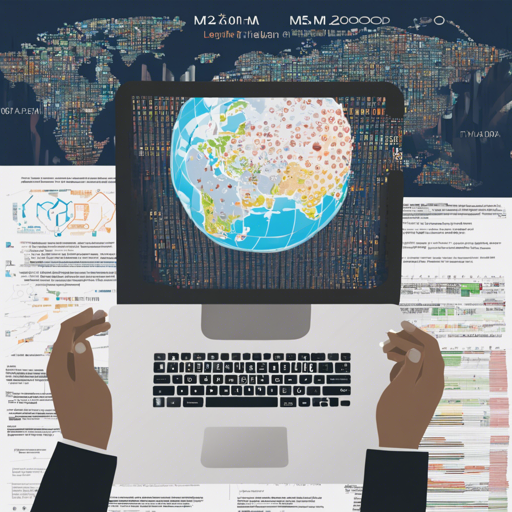The world is becoming increasingly interconnected, and the ability to communicate across languages is more essential than ever. If you’re looking to translate texts from English to Yorùbá, look no further than the **m2m100_418M-eng-yor-mt** model. This guide will walk you through the essentials of using this powerful machine translation model sourced from the Hugging Face’s dedicated resources.
What is the M2M100 Model?
The **m2m100_418M-eng-yor-mt** model is a machine translation tool that translates from English to Yorùbá. Think of it as a translator in a library, capable of rapidly picking up English texts and turning them into beautifully crafted Yorùbá without losing the essence of the original message. This model is based on the more extensive **facebookm2m100_418M** framework, fine-tuned specifically with the JW300 Yorùbá corpus and the **[Menyo-20k](https://huggingface.co/datasets/menyo20k_mt)** dataset to provide strong baseline translation capabilities.
Getting Started with the Model
- Visit the Hugging Face Model Hub to access the **m2m100_418M-eng-yor-mt** model.
- Download the model weights and necessary dependencies according to the documentation provided.
- Load the model in your preferred programming environment, such as Python.
- Use simple function calls to input your English sentences and retrieve their Yorùbá translations.
Understanding the Model’s Limitations
It is crucial to remember that no model is perfect. The m2m100_418M-eng-yor-mt model is limited by its training dataset, which means it may not perform optimally across various domains or specialized texts. Think of it like a translator who has studied certain books very well, but might struggle with novels or field-specific literature.
Training Data Insights
This model was fine-tuned on the JW300 corpus and the **[Menyo-20k](https://huggingface.co/datasets/menyo20k_mt)** dataset. The training was performed on powerful NVIDIA V100 GPUs, ensuring it learned complex language patterns effectively.
Evaluation Results
The performance of the model is measured using the BLEU score metrics, a standard used to evaluate the quality of text that has been machine-translated. The fine-tuned m2m100_418M achieves a BLEU score of 13.39 on the **[Menyo-20k test set](https://arxiv.org/abs/2103.08647)**, outperforming the mt5-base model which achieves a score of 9.82. This performance metric indicates the reliability of the m2m100 model for translation tasks.
Troubleshooting Common Issues
- Issue: Model fails to load or raises an error during import.
- Solution: Ensure that you have installed all necessary dependencies and your environment meets the model’s requirements.
- Issue: Inconsistent translation results.
- Solution: Remember that the model’s performance varies based on input complexity. For specialized texts, consider pre-processing your data to enhance translation quality.
For more insights, updates, or to collaborate on AI development projects, stay connected with fxis.ai.
Conclusion
With the m2m100_418M model, translating English to Yorùbá becomes a streamlined process, cutting down the time and effort spent on manual translations. Our exploration into machine translation models is just the beginning; at fxis.ai, we believe that such advancements are crucial for the future of AI, as they enable more comprehensive and effective solutions. Our team is continually exploring new methodologies to push the envelope in artificial intelligence, ensuring that our clients benefit from the latest technological innovations.

